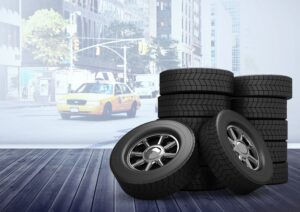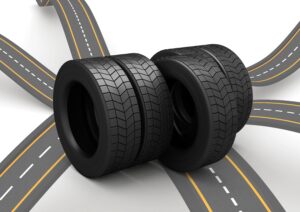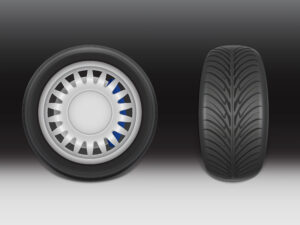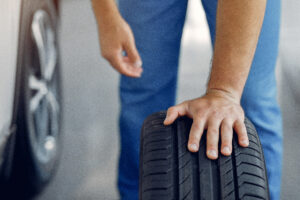How Much Air Pressure in Car Tyre? Your Ultimate Guide
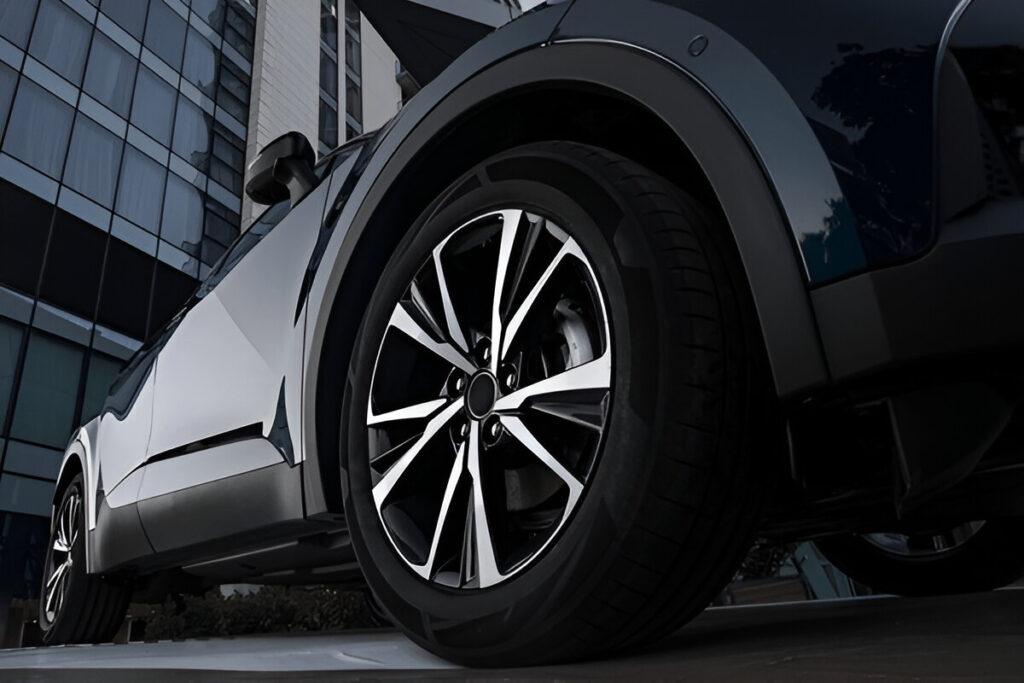
Maintaining the correct air pressure in car tyres is essential for both your safety and the optimal performance of your vehicle. How much air pressure in car tyre should you maintain to get the best results in terms of safety, fuel efficiency, and tyre longevity? The recommended PSI for cars typically falls between 30 and 35 PSI, but it’s crucial to refer to your vehicle’s manual for the exact numbers, as this can vary based on your car model and the type of tyres you use.
How much air pressure in car tyre is too much or too little? It’s all about finding that sweet spot where the tyres are neither overinflated nor underinflated. Keeping your tyres properly inflated has several benefits, such as improving fuel efficiency, enhancing vehicle handling, increasing safety, and prolonging tyre life. In this guide, we will explore everything you need to know about the correct air pressure in car tyres, including front and rear tyre settings, correct air pressure for mileage, and essential tyre safety tips.
What is the Recommended PSI for Cars?
The recommended PSI for cars refers to the ideal air pressure your car tyres should have to ensure optimal performance. PSI, or pounds per square inch, is the standard measurement for tyre pressure. When tyres are inflated to the recommended PSI, they will offer the best balance between safety, fuel efficiency, and durability.
For most cars, the ideal tyre pressure is typically within the range of 30-35 PSI. However, this value can differ depending on your vehicle’s make and model. Therefore, it’s crucial to check your car’s owner manual or the sticker inside the driver’s side door frame, where you’ll find the specific PSI requirements. Remember, how much air pressure in car tyre is necessary depends on your vehicle’s weight, the type of tyres, and the driving conditions you typically encounter.
Front and Rear Tyre Settings
Many car owners may wonder, “Why do I need different tyre pressure for the front and rear tyres?” The reason lies in the weight distribution of your vehicle. The front and rear tyre settings often differ to account for the weight of the engine and other components located at the front of the car. Front tyres often require a slightly higher air pressure compared to rear tyres because they bear more of the vehicle’s weight.
To ensure optimal performance and even wear, always follow the specific front and rear tyre settings indicated by the manufacturer. Checking both front and rear tyres is essential for achieving balanced tyre wear, improving fuel efficiency, and maintaining handling control.
How Correct Air Pressure Enhances Mileage
Maintaining the correct air pressure for mileage plays a significant role in improving your car’s fuel efficiency. When how much air pressure in car tyre is too low, the tyres experience increased rolling resistance, meaning the engine must work harder to move the car. This extra effort leads to higher fuel consumption.
On the other hand, when your tyres are inflated to the proper PSI, rolling resistance is minimized, allowing your car to move more smoothly with less effort. This improved efficiency not only results in better fuel-saving air pressure but also contributes to lower fuel costs in the long run. By keeping your tyres properly inflated, you can achieve the best balance of performance and fuel economy.
Tyre Safety Tips You Must Know
Tyre safety is critical, and improper inflation can pose serious risks. Here are some essential tyre safety tips that every car owner should know:
- Overinflation can make tyres too stiff, which may cause a rough ride, reduced traction, and an increased risk of blowouts, especially when driving on hot days.
- Underinflation can lead to excessive tyre wear, reduced fuel efficiency, and the danger of tyre blowouts due to overheating.
To avoid these risks, always ensure your tyres are inflated to the recommended PSI for cars. Regularly check tyre pressure and make it a habit to inspect your tyres for signs of damage, such as cracks or bulges.
Pressure Check Tips for Every Car Owner
One of the simplest yet most important aspects of tyre care is regularly checking the air pressure in your tyres. Here are some pressure check tips every car owner should follow:
- Check tyre pressure weekly or at least before embarking on a long journey. Tyres naturally lose air over time, and regular checks can help you catch any problems early.
- Use a reliable tyre pressure gauge to measure PSI accurately. Digital gauges tend to be more precise than analog ones.
- Don’t forget your spare tyre. It’s easy to overlook, but you don’t want to be caught with a flat spare tyre in case of an emergency.
By performing these checks, you can maintain the correct air pressure in your car tyres, improving safety and fuel efficiency.
Optimal Inflation for Long Drives
When preparing for a long road trip, it’s essential to ensure that your tyres are properly inflated for the additional load. Optimal inflation for long drives may require adjusting the air pressure depending on how much weight you’re carrying. If you’re travelling with luggage or extra passengers, you may need to increase the air pressure slightly to maintain safety and handling.
Additionally, remember to check the spare tyre before starting your journey, as this can be a lifesaver in case of a flat. Having properly inflated tyres will contribute to a smoother and safer driving experience, especially over long distances.
Fuel-Saving Air Pressure Techniques
To save on fuel costs, maintaining fuel-saving air pressure is essential. Studies have shown that properly inflated tyres can increase fuel efficiency by up to 3%. Even a small reduction in tyre pressure can cause a noticeable drop in fuel economy. Keeping your tyres at the correct pressure ensures that your car runs efficiently and that you get the most out of every tank of fuel.
Remember, how much air pressure in car tyre you maintain directly affects your car’s performance, so it’s worth taking the time to check and adjust your tyres regularly.
Tyre Maintenance Guide
Proper tyre maintenance is essential for the longevity of your tyres. Here’s a quick guide to keeping your tyres in top condition:
- Rotate your tyres regularly (every 6,000 to 8,000 miles) to ensure even tread wear.
- Inspect your tyres for damage, such as punctures, cracks, or bulges. If you notice any issues, seek professional help.
- Check alignment and balance to prevent uneven wear and ensure a smooth, comfortable ride.
- Replace worn-out tyres to maintain safety and performance.
By following these guidelines, you can ensure that your tyres last longer and provide a safe, smooth driving experience.
Why Choose KwikFix Auto for Tyre Maintenance?
When it comes to air pressure in car tyres and overall tyre care, KwikFix Auto is your trusted partner. Their comprehensive services include tyre checks, replacements, and regular maintenance to ensure your vehicle stays in top condition. Whether you drive a luxury vehicle or a standard model, KwikFix Auto caters to all brands, providing top-quality care.
Looking for expert tyre care? Visit KwikFix Auto for all your tyre needs. Call +91 9950345345 today to book an appointment for a comprehensive tyre check, ensuring your safety on the road.
Conclusion
In conclusion, how much air pressure in car tyre you maintain plays a crucial role in the safety, performance, and longevity of your tyres. Keeping your tyres inflated to the recommended PSI for cars improves fuel efficiency, reduces wear, and ensures a smoother, safer ride. Regularly checking tyre pressure, following pressure check tips, and adhering to tyre safety tips will help keep your vehicle in top shape. Don’t forget to schedule a tyre check with KwikFix Auto for expert care and maintenance.
Frequently Asked Questions (FAQs)
Q1. How much air pressure in car tyre is ideal?
A1. The ideal tyre pressure typically ranges from 30 to 35 PSI for most vehicles. Always refer to your vehicle’s manual or the sticker inside the door frame for the specific recommended PSI for cars.
Q2. Why is it important to check the tyre pressure regularly?
A2. Checking tyre pressure regularly ensures that your tyres are neither overinflated nor underinflated, improving fuel-saving air pressure and tyre safety.
Q3. How do I know the correct air pressure for my tyres?
A3. The correct air pressure can be found in your car’s owner manual or on a sticker inside the driver’s side door frame.
Q4. Can incorrect tyre pressure affect fuel efficiency?
A4. Yes, maintaining the correct air pressure for mileage helps reduce rolling resistance, which can improve fuel efficiency by up to 3%.
Q5. Should I adjust tyre pressure before long drives?
A5. Yes, if you’re carrying extra load, increase the tyre pressure slightly for optimal inflation for long drives.
Q6. How often should I check my tyre pressure?
A6. It’s recommended to check tyre pressure at least once a week or before going on long trips.
Q7. What are the dangers of underinflated tyres?
A7. Underinflated tyres can lead to increased wear, reduced fuel efficiency, and the risk of blowouts due to overheating.
Q8. How can I ensure my tyres last longer?
A8. Regularly check tyre pressure, rotate your tyres, and ensure proper alignment to maintain even wear and extend tyre lifespan.

